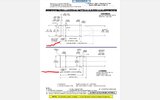I was going through some data to work up some 9mm Luger loads for the Berry's 124-grain HBFP plated bullets I picked up, and while I was at it decided to check the trim length so I could check all the processed range brass I have. I noticed the Lyman manual says trim-to length is .751", Western (Accurate) says .749", and Hornady and Speer say .744". My Lee trimmer takes cases down to 0.748". When I started measuring brass, I found 0% were as long as Lyman says the minimum length is. Every single one was under .750". About 60% were between .744" and .749", and around 40% were less than .744". There were even some that were under .740". I tossed everything .733" and shorter, and kept the rest, sorting them into .744" - .745" and .746" - .748" groups. From a safety standpoint I think I'm fine since two of the four sources I checked say .744" is acceptable.
I know that consistent brass length is important for consistent crimp, and because 9mm headspaces on the case mouth. Then again, we're talking about 9mm here, not precision rifle ammo. Do most folks even bother going through the trouble of measuring 9mm brass, and if they do, how particular are they about using only cases that are within a thousandth or two of each other? I know I can't adjust my crimp die that finely.
www.floridareloading.com


